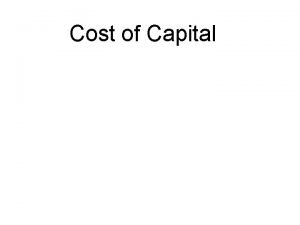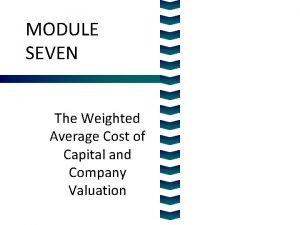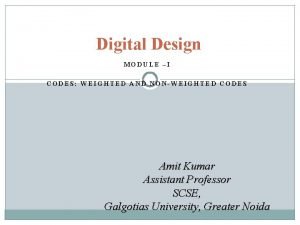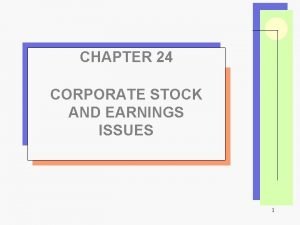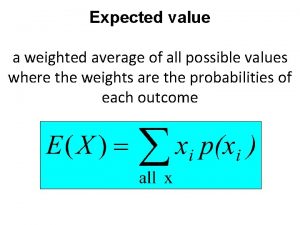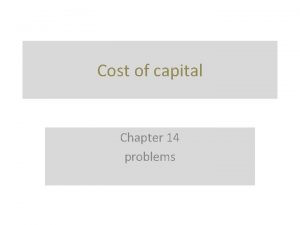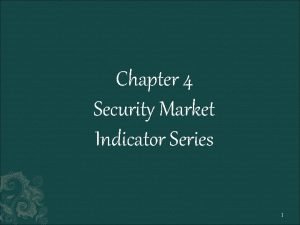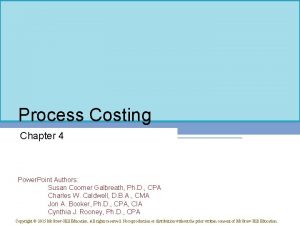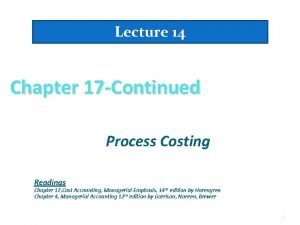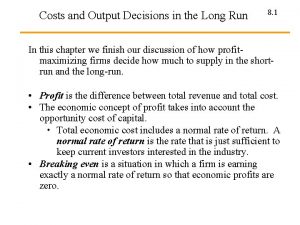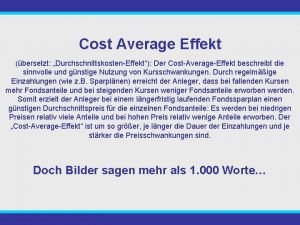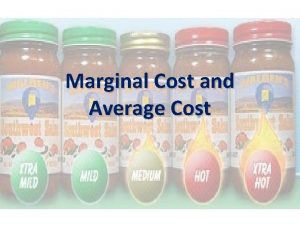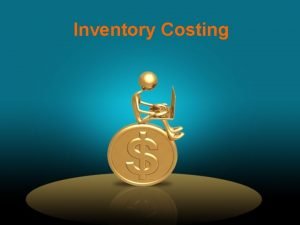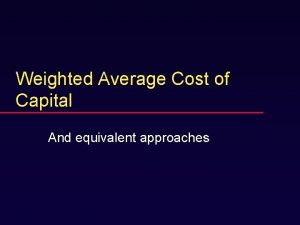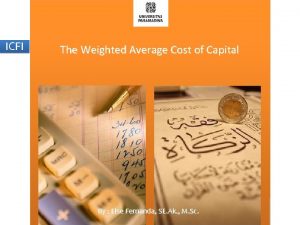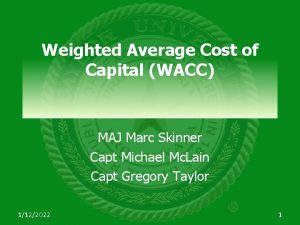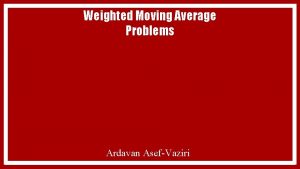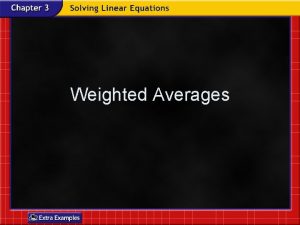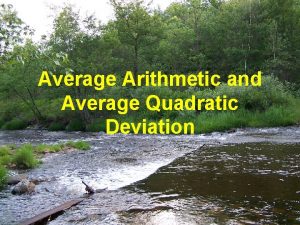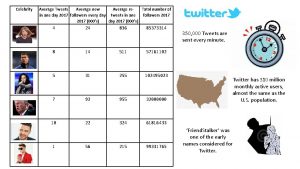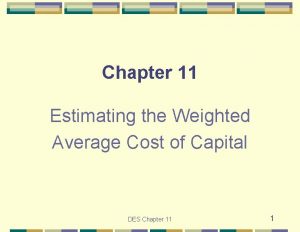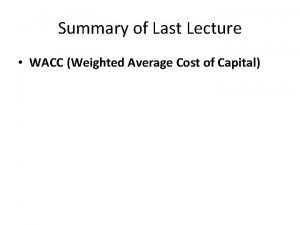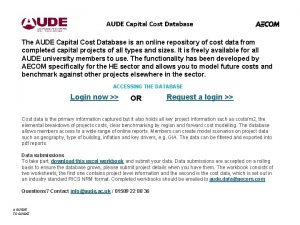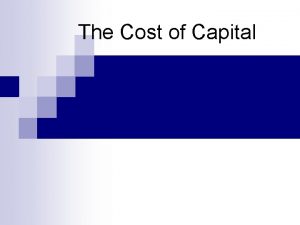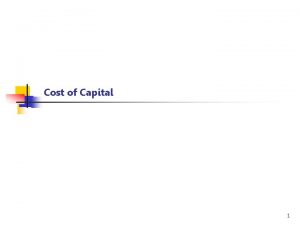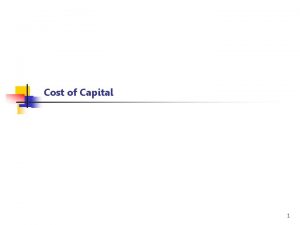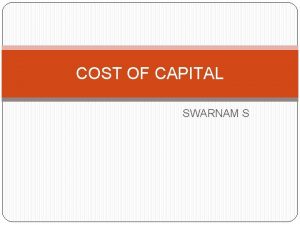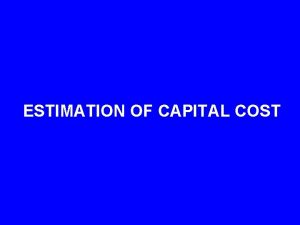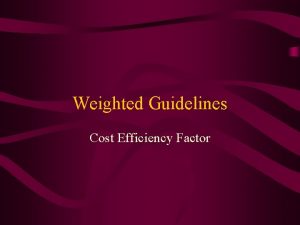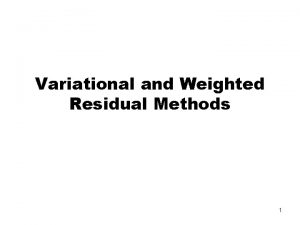MODULE SEVEN The Weighted Average Cost of Capital

























- Slides: 25

MODULE SEVEN The Weighted Average Cost of Capital and Company Valuation

Topics Covered • • Geothermal’s Cost of Capital Weighted Average Cost of Capital (WACC) Measuring Capital Structure Calculating Required Rates of Return Calculating WACC Interpreting WACC Valuing Entire Businesses

Cost of Capital - The return the firm’s investors could expect to earn if they invested in securities with comparable degrees of risk. Capital Structure - The firm’s mix of long term financing and equity financing.

Cost of Capital Example Geothermal Inc. has the following structure. Given that geothermal pays 8% for debt and 14% for equity, what is the Company Cost of Capital?

Cost of Capital Example - Geothermal Inc. has the following structure. Given that geothermal pays 8% for debt and 14% for equity, what is the Company Cost of Capital?

Cost of Capital Example - Geothermal Inc. has the following structure. Given that geothermal pays 8% for debt and 14% for equity, what is the Company Cost of Capital?

Cost of Capital Example - Geothermal Inc. has the following structure. Given that geothermal pays 8% for debt and 14% for equity, what is the Company Cost of Capital? Interest is tax deductible. Given a 35% tax rate, debt only costs us 5. 2% (i. e. 8 % x. 65).

WACC Weighted Average Cost of Capital (WACC) The expected rate of return on a portfolio of all the firm’s securities, adjusted for tax savings due to interest payments. Company cost of capital = Weighted average of debt and equity returns.

WACC • Taxes are an important consideration in the company cost of capital because interest payments are deducted from income before tax is calculated.

WACC Weighted Average Cost of Capital = WACC

WACC Three Steps to Calculating Cost of Capital 1. Calculate the value of each security as a proportion of the firm’s market value. 2. Determine the required rate of return on each security. 3. Calculate a weighted average after tax return on the debt and the return on the equity.

WACC Weighted Average Cost of Capital with Preferred Stock

WACC Example - Executive Fruit has issued debt, preferred stock and common stock. The market value of these securities are $4 mil, $2 mil, and $6 mil, respectively. The required returns are 6%, 12%, and 18%, respectively. Q: Determine the WACC for Executive Fruit, Inc.

WACC Example - continued Step 1 Firm Value = 4 + 2 + 6 = $12 mil Step 2 Required returns are given Step 3

Measuring Capital Structure • In estimating WACC, do not use the Book Value of securities. • In estimating WACC, use the Market Value of the securities. • Book Values often do not represent the true market value of a firm’s securities.

Measuring Capital Structure Market Value of Bonds - PV of all coupons and par value discounted at the current YTM. Market Value of Equity - Market price per share multiplied by the number of outstanding shares.

Measuring Capital Structure

Measuring Capital Structure If the long term bonds pay an 8% coupon and mature in 12 years, what is their market value assuming a 9% YTM?

Measuring Capital Structure

Required Rates of Return Bonds Common Stock

Required Rates of Return Dividend Discount Model Cost of Equity Perpetuity Growth Model = solve for re

Required Rates of Return Expected Return on Preferred Stock Price of Preferred Stock = solve for preferred

Interpreting WACC • The WACC is an appropriate discount rate only for a project that is a carbon copy of the firm's existing business • There are two costs of debt financing. The explicit cost of debt is the rate of interest bondholders demand. The implicit cost is the required increase in return from equity.

* FCF and PV * • Free Cash Flows (FCF) should be theoretical basis for all PV calculations. • FCF is a more accurate measurement of PV than either Div or EPS. • The market price does not always reflect the PV of FCF. • When valuing a business for purchase, always use FCF.

Capital Budgeting • Valuing a Business – The value of a business or project is usually computed as the discounted value of FCF out to a valuation horizon (H). • The valuation horizon is sometimes called the terminal value and is calculated like PVGO.
 Cost of debt formula
Cost of debt formula Merchandise inventory turnover
Merchandise inventory turnover Weighted average cost inventory
Weighted average cost inventory Weighted and non weighted codes in digital electronics
Weighted and non weighted codes in digital electronics Distinguish between average cost and marginal cost
Distinguish between average cost and marginal cost Multinational capital structure
Multinational capital structure Multinational cost of capital and capital structure
Multinational cost of capital and capital structure How to compute legal capital
How to compute legal capital Weighted average of all possible outcomes
Weighted average of all possible outcomes Exponentially weighted average
Exponentially weighted average Fama's llamas has a weighted average
Fama's llamas has a weighted average Security market indicator series
Security market indicator series Process costing fifo vs weighted average
Process costing fifo vs weighted average Chapter 17 process costing
Chapter 17 process costing Difference between speed and velocity class 9
Difference between speed and velocity class 9 Seven heavenly virtues mal
Seven heavenly virtues mal Cities built on seven hills
Cities built on seven hills C device module module 1
C device module module 1 Lrac curve
Lrac curve Durchschnittskosteneffekt
Durchschnittskosteneffekt Average medical school cost
Average medical school cost Average total cost
Average total cost Accounting
Accounting Gross operating cycle
Gross operating cycle Source of capital reserve
Source of capital reserve Difference between capital reserve and reserve capital
Difference between capital reserve and reserve capital
